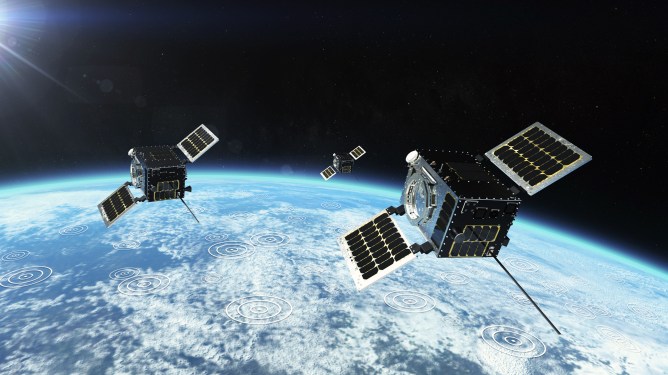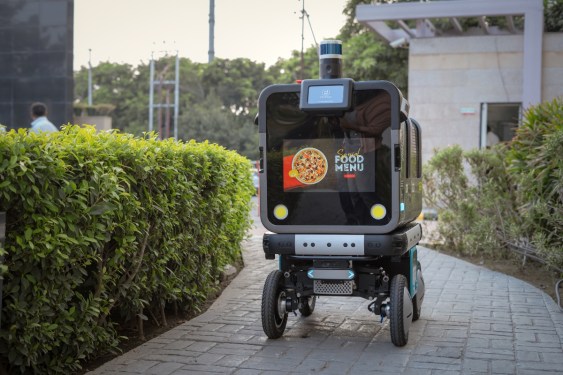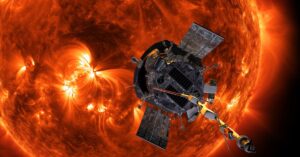A Growing Concern for Satellite Operators
Remote-sensing satellite operator HawkEye 360 is the latest to experience problems in orbit, due to an ‘irreparable’ failure of propulsion systems made by Austria-based Enpulsion. The issue has been compounded by high solar activity, which can create issues for spacecraft and accelerate their orbital decay.
The Root Cause of the Problem
While HawkEye declined to name its propulsion provider to TechCrunch, an April 2022 letter from HawkEye to the FCC states that the affected satellites are equipped with Enpulsion’s IFM Nano Thruster propulsion system. This system has been installed on several of HawkEye’s satellites, including Cluster 4.
The Impact of Solar Activity
According to NASA, we are currently approaching solar maximum, or the time in the solar cycle when the sun’s activity peaks. This activity can include powerful geomagnetic storms that can create issues for spacecraft and accelerate their orbital decay. In a statement to TechCrunch, HawkEye confirmed that the Cluster 4 satellites are experiencing propulsion system anomalies due to high solar activity.
A Temporary Solution
HawkEye requested temporary permission from the U.S. Federal Communications Commission (FCC) to operate three of its satellites, called Cluster 4, at a lower altitude on July 24. The company stated that the affected satellites were deployed at a lower altitude and had a propulsion system anomaly that has shortened their potential mission life.
A Permanent Solution
In a separate filing, HawkEye requested permanent authority to operate its constellation at orbital altitudes of 400-615 kilometers. Given the propulsion failures, the company believes that this is necessary to ensure the continued operation of its satellites.
The Switch to Bradford Space
HawkEye has already discontinued use of Enpulsion’s systems: in March, the FCC approved HawkEye’s request to switch to a water-based propulsion system made by Bradford Space starting with Cluster 7 and on all future satellites. The company launched Cluster 7 to orbit in April, bringing its constellation to 21 spacecraft (including the three experiencing issues here).
The Statement from Enpulsion
Update: Enpulsion CEO Alexander Reissner said, ‘The root cause of the HawkEye anomalies was pinpointed in a constructive and collaborative investigation between our teams. It was the combined result of specific operational mission needs together with the specific atmospheric environment of the constellation that eventually led to the current non-operative state. A worst case that is unfortunately almost impossible to reproduce on ground and was therefore not covered in initial verification tests.’
The Impact on Spacecraft
The failure of propulsion systems made by Enpulsion has raised concerns about the reliability of satellite operators’ systems. The issue has been compounded by high solar activity, which can create issues for spacecraft and accelerate their orbital decay.
The Long-Term Implications
While HawkEye’s Cluster 4 satellites are not in danger of deorbiting, the propulsion system anomalies have shortened their potential mission life. The company’s overall constellation architecture is robust and provides for variation in mission life based on deployment altitude, anomalies, and space weather.
Related Topics
About the Author
Aria Alamalhodaei covers the space and defense industries at TechCrunch. Previously, she covered the public utilities and the power grid for California Energy Report. She holds a degree in journalism from the University of Southern California.
Subscribe to Our Newsletter
By submitting your email address, you agree to our Terms and Privacy Notice.
Related Stories
- Fintech
- Groww, India’s biggest trading app, prepares for IPO
Manish Singh 4 hours ago - Fundraising
UK in-home healthcare provider Cera raises $150M to scale its AI platform
Mike Butcher 11 hours ago
- Groww, India’s biggest trading app, prepares for IPO
- Transportation
- Toyota is ‘exploring rockets’ and has made its first investment into Interstellar Technologies
Sean O’Kane Kirsten Korosec Jan 6, 2025
- Toyota is ‘exploring rockets’ and has made its first investment into Interstellar Technologies















